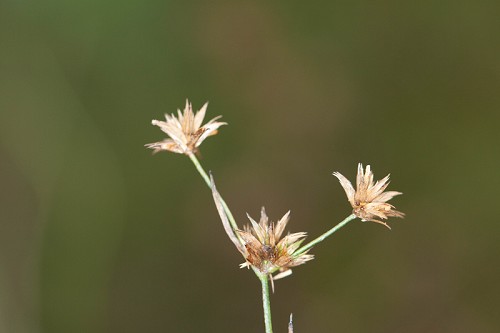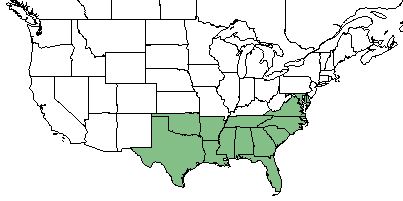Difference between revisions of "Juncus repens"
(→Distribution) |
|||
| Line 31: | Line 31: | ||
==Ecology== | ==Ecology== | ||
===Habitat=== <!--Natural communities, human disturbed habitats, topography, hydrology, soils, light, fire regime requirements for removal of competition, etc.--> | ===Habitat=== <!--Natural communities, human disturbed habitats, topography, hydrology, soils, light, fire regime requirements for removal of competition, etc.--> | ||
| + | The main communities include streams, ponds, lakes, ditches, wet depressions in flatwoods, and cypress savannahs. <ref name= "Weakley"> Weakley, A. S. (2015). Flora of the Southern and Mid-Atlantic States. Chapel Hill, NC, University of North Carolina Herbarium. </ref> | ||
| + | |||
<!--===Phenology===--> <!--Timing off flowering, fruiting, seed dispersal, and environmental triggers. Cite PanFlora website if appropriate: http://www.gilnelson.com/PanFlora/ --> | <!--===Phenology===--> <!--Timing off flowering, fruiting, seed dispersal, and environmental triggers. Cite PanFlora website if appropriate: http://www.gilnelson.com/PanFlora/ --> | ||
<!--===Seed dispersal===--> | <!--===Seed dispersal===--> | ||
Revision as of 16:02, 22 May 2018
| Juncus repens | |
|---|---|

| |
| Photo by the Southeastern Flora Database | |
| Scientific classification | |
| Kingdom: | Plantae |
| Division: | Magnoliophyta - Flowering plants |
| Class: | Liliopsida - Moncots |
| Order: | Juncales |
| Family: | Juncaceae |
| Genus: | Juncus |
| Species: | J. repens |
| Binomial name | |
| Juncus repens Michx. | |

| |
| Natural range of Juncus repens from USDA NRCS Plants Database. | |
Contents
Taxonomic Notes
Synonyms: none
Varieties: none
Description
J. repens, also known as lesser creeping rush, is a native annual perennial with a graminoid growth habit that is in the Juncaceae family. It contains rhizomatous growth for rapid clonal reproduction as well. The mature height can reach up to 6.8 feet, yet a short lifespan. [1]
Distribution
J. repens can be found along the Gulf of Mexico coast and Atlantic coast in the Southeast United States, ranging from east Texas to Virginia and Maryland. [1]
Ecology
Habitat
The main communities include streams, ponds, lakes, ditches, wet depressions in flatwoods, and cypress savannahs. [2]
Conservation and Management
Cultivation and restoration
Photo Gallery
References and notes
- ↑ 1.0 1.1 USDA Plants Database URL: https://plants.usda.gov/core/profile?symbol=JURE2
- ↑ Weakley, A. S. (2015). Flora of the Southern and Mid-Atlantic States. Chapel Hill, NC, University of North Carolina Herbarium.